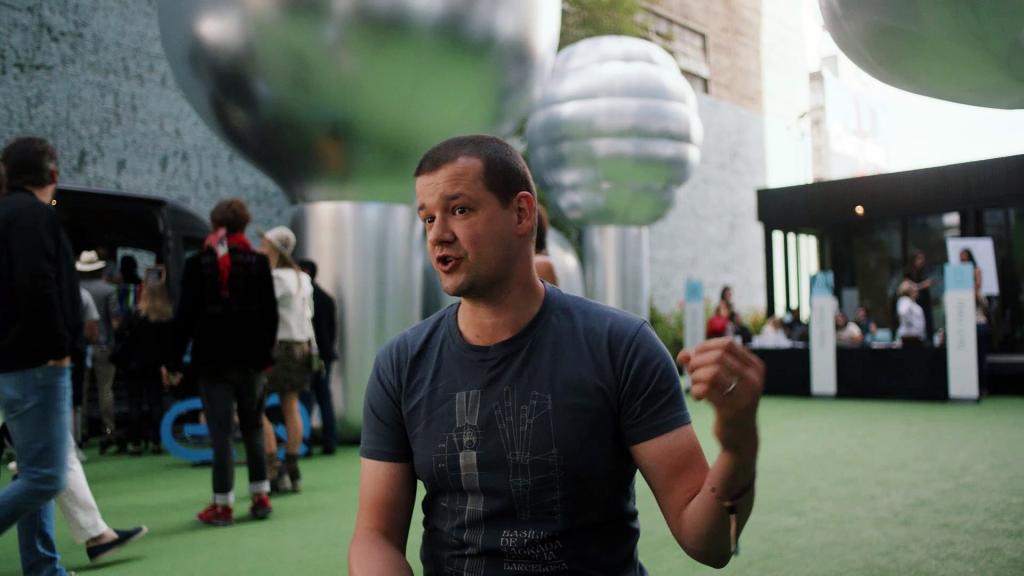Eugene Berdichevsky was one of the first members of the Tesla team. Today, he is the owner of Sila Nanotechnologies' own startup, which is valued at more than a billion dollars.
Berdichevsky recently gave an exclusive interview, talking about his journey, the creation of the first car on solar panels and the millions of dollars that his startup, growing at an incredible speed, brings him.

Thousands of Miles and Education
Eugene was born on the Black Sea in Ukraine, lived in St. Petersburg and spent five years north of the Arctic Circle. After he moved with his family to Richmond, Virginia, and graduated from college in California.
He was lucky enough to grow up in a family of entrepreneurs, and Eugene was a witness of how his father opened a small business. His parents were programmers and worked on nuclear submarines.
The only thing he was sure of was that he would never be a programmer. He liked math and science, which led him to study mechanical engineering.
During his first year at Stanford, he took part in a project to create a solar-powered car. Students had to design a car and drive it all over the country - 2,300 miles from Chicago to Los Angeles.
Eugene’s team built the chassis from scratch, made a carbon fiber body and powered the resulting transport from a battery with a capacity comparable to a conventional toaster in the kitchen.
The project radically changed his life and career: he fell in love with energy and mechanical engineering, deciding to build something from scratch and find answers to many problems.

Controlling energy
Berdichevsky received a master's degree in energy from Stanford. At that time there were no necessary training programs, so he independently drew up a curriculum. He diligently studied the physics of semiconductors, quantum mechanics, solar energy and materials.
Today, many young people refuse to study at the university: why do it if you can do it yourself, and all the materials are freely available on the Internet?
Like many other creators of successful startups, Stanford graduates, Eugene appreciated the Internet. He found many of his colleagues who still work with him at Sila on the Web.
Tesla and Battery Issues
At the end of the first year, Eugene became the seventh employee of Tesla, taking the post of technical director of the architecture development department of battery systems.
When Berdichevsky just started working, Tesla had only 10 people, and at the time of his departure, exceeded 300 employees, increasing by 30 times in just four years. Today, the company employs more than 45 thousand people, and its capital exceeds $ 40 billion.
Eugene learned a valuable lesson from Tesla: major problems are more interesting and easier to solve than minor ones. A start-up aimed at finding a way out of such problems helps attract real talents, benefits humanity - no matter how pathetic it sounds - and reduces competition to nothing.
Starting your own business
From the first day of work at Tesla, Eugene was thinking about his company and how to build it from scratch. He even created a business plan for the production of electric cars in the United States, while studying at Stanford.
During his trips, Eugene met with different people, one of whom was his future co-founder Gleb Yushin. The third founder of Sila Nano was a former colleague from Tesla - Alex Jacobs.

The next step is financing.
After opening their business, they began to search for financing. They had a huge advantage in the form of Gleb’s intellectual property: six patents and four years of studying these problems that they wanted to solve.
They began to attract investors and were able to raise $ 295 million. Proper positioning of the business played an important role, since many burned out at battery companies. Eugene and colleagues immediately explained that they had a technology company engaged in the production of parts for batteries. Today their company is valued at over a billion dollars.

Sila nanotechnologies
In the first days of their work, they managed to attract a group of talented engineers whose goal was the development, production and sale of equipment. In the end, they managed to create a powder that replaced graphite powder in lithium-ion batteries. The development of Sila Nano gives more energy with the same weight and capacity.
Sila managed to reduce the battery weight by 20% and increase its power by the same 20% due to the use of innovative material. Accordingly, cars with their batteries can go 20% longer. Innovative material can be used in various fields - from space to the creation of air taxi.
Eugene’s career, like the development of Sila, does not stand still. Over the past five years, his brainchild has grown by 40% every year and, apparently, does not think to stop.
